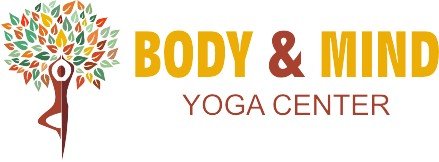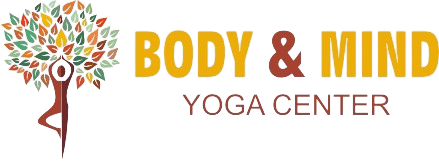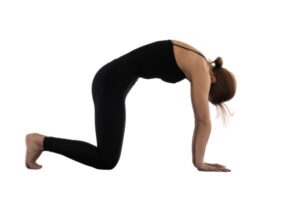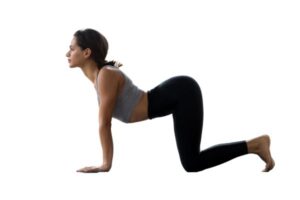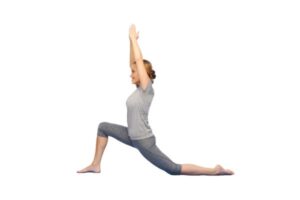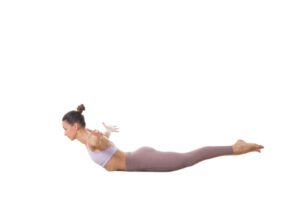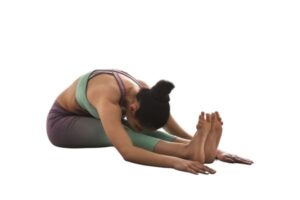Embarking on a journey into the world of yoga can be both exciting and rewarding, especially for beginners. Yoga not only enhances physical flexibility and strength but also promotes mental well-being and stress relief. If you’re new to the practice, incorporating a few simple yet effective yoga poses into your daily routine can make a significant difference. In this blog post, we’ll explore five beginner-friendly yoga poses that you can easily incorporate into your daily schedule for a healthier and more balanced life.
Why Should You Incorporate Basic Yoga Poses Into Your Daily Routine?
Incorporating basic yoga poses into your daily routine offers a myriad of benefits for both physical and mental well-being. Yoga poses enhance flexibility, strengthen muscles, and improve posture. Also, integrating yogic breathing techniques promotes relaxation, reduces stress, and enhances mindfulness. Embracing this holistic approach fosters a harmonious balance between body and mind, promoting overall health and a sense of inner calm in the midst of daily challenges.
Benefits of a Daily Yoga Practice
- Improved Flexibility: Yoga enhances flexibility by stretching and lengthening muscles.
- Increased Strength: Various poses build and tone muscles, improving overall strength.
- Enhanced Posture: Yoga encourages awareness of body alignment, leading to better posture.
- Stress Reduction: Mindful breathing and meditation in yoga reduce stress and promote relaxation.
- Enhanced Circulation: Poses and movements improve blood flow, benefiting overall cardiovascular health.
- Better Sleep: Relaxation techniques in yoga contribute to improved sleep quality.
Here are 5 Simple Yoga Poses for Beginners
Cat Pose (Marjaryasana):
Begin your yoga routine with the Cat Pose, also known as Marjaryasana. This gentle pose is an excellent way to warm up your spine and release tension in the neck and back. The Cat Pose is not only a great physical warm-up but also helps center your mind and focus on your breath.
How to Do It
1.Start on your hands and knees in a tabletop position.
2.Inhale as you arch your back, dropping your belly towards the mat, and lift your head and tailbone towards the ceiling.
3.Exhale as you round your back, tucking your chin to your chest and drawing your navel in towards your spine.
4.Repeat this flow, moving between the arched and rounded positions for a few breaths.
Cow Pose (Bitilasana):
Following the Cat Pose, seamlessly transition into the Cow Pose, or Bitilasana. This pose complements the Cat Pose, creating a fluid movement that continues to warm up your spine and stretch your torso. The Cat-Cow flow enhances flexibility in the spine, promotes circulation, and helps alleviate any stiffness or tension in the back.
How to Do It
1.From the Cat Pose position, inhale as you arch your back, drop your belly towards the mat, and lift your head and tailbone towards the ceiling.
2.Lift your chest and broaden your shoulders, allowing your gaze to lift slightly.
Low Lunge (Anjaneyasana):
Moving on to standing poses, the Low Lunge, or Anjaneyasana, is a fantastic way to stretch and strengthen the legs, hips, and thighs. The Low Lunge is an excellent pose for beginners to build leg strength and improve flexibility in the hips.
How to Do It
1.Start in a standing position with your feet together.
2.Step one foot back, lowering the knee to the mat.
3.Ensure the front knee is directly above the ankle, creating a 90-degree angle.
4.Sink your hips forward and down, feeling a stretch in the hip flexors.
5.Lift your arms overhead or place your hands on your front knee for balance.
Locust Pose (Salabhasana):
To engage your back muscles and strengthen the entire spine, incorporate the Locust Pose, or Salabhasana, into your routine. This pose targets the muscles in the back while improving posture. The Locust Pose is an empowering pose that helps build strength in the lower back, buttocks, and legs. It’s essential to engage your core muscles while performing this pose to protect your lower back.
How to Do It
1.Lie on your stomach with your arms alongside your body, palms facing up.
2.Inhale as you lift your head, chest, arms, and legs off the mat, using the strength of your back muscles.
3.Keep your gaze down to maintain the natural alignment of your neck.
Seated Forward Bend (Paschimottanasana):
To wind down your yoga routine, finish with the Seated Forward Bend, or Paschimottanasana. This pose stretches the entire backside of your body, from the hamstrings to the spine.The Seated Forward Bend is a calming pose that promotes relaxation, relieves stress, and provides a gentle stretch to the spine and hamstrings.
How to Do It
1.Sit on the mat with your legs extended in front of you.
2.Inhale as you lengthen your spine, and exhale as you hinge at the hips to fold forward.
3. Reach for your feet or shins, keeping your back straight.
4.If your hamstrings are tight, you can bend your knees slightly.
Conclusion:
Incorporating these yoga poses into your daily routine can be a transformative step towards improving your physical and mental well-being. Whether you’re a beginner or an experienced yogi, dedicating time each day to these poses can enhance your flexibility, build strength, and bring a sense of peace and mindfulness into your life. Remember to listen to your body, breathe deeply, and enjoy the journey of self-discovery through yoga. Namaste!
Embrace these yoga poses regularly to foster a harmonious blend of strength, flexibility, and tranquility in your wellness routine. Want to learn Yoga? Visit Body and Mind Yoga Center, we provide the best yoga classes in Dubai with a variety of lessons suited to fit your needs and preferences.
